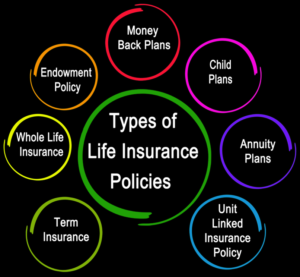Common Life Insurance Policy Types Explained
In the process of clarifying the various life insurance policy types that are most popular, it is important to note first that life insurance is a contract between an insured person (the insurance policy holder) and an insurer (an insurance company) where the insurer promises to pay a certain or named beneficiary a sum of money in exchange for a premium when the insured person is dead. Based on the agreements on the contract, critical or terminal illness can also trigger payment before the insured is dead.
The insured person pays premium in installments or as a lump sum. Some other benefits included in this type of insurance include funeral expenses. However, do not expect the insurance company to pay any benefits for suicide cases or fraud and claims relating to war, riot and civil unrest or commotion.
Life insurance policy types can be grouped into two main classes:
- Temporary
- Permanent
Term insurance policy
This is designed for only protection in the event of the death of the insured and does not cover anything else. It is called “pure” insurance and does not accumulate cash for the beneficiary. These three factors should be considered in term insurance;
- Face amount (protection or death benefit for the insured person)
- Time of coverage (term insurance)
- What it would cost the insured person (Premium)
There are different types of term life insurance or assurance based on the premium paid by the insured person and they are:
Annual renewable term
This is a one-year policy where the insurance company sets the insured person’s premium based on his or her age at the time of application and the insurer guarantees that it will issue a policy of equal or less amount for the person applying for the insurance.
Level premium term
Here, the policy can be purchased in 5, 10, 15 to 35 years terms. The premium as well as the death benefits stays the same during this period.
Mortgage Life Insurance is another common type of term insurance which usually involves a level-premium, declining face value policy. In this type of term insurance, the face amount is supposed to be equal the amount of the mortgage on the insured person’s property, which means that if there is any pending amount on the applicant’s mortgage, it will be paid in case the applicant die.
The most common life insurance policy types are grouped into two main categories. They are as follows:
- Protection policies: This is designed to provide a benefit in the event of a specified event. This is usually a lump sum payment in the name of the insured person. A common form of this insurance is term insurance.
- Investment policies: This is a category where its main aim is to enhance the growth of capital by regular premiums or a single lump sum premium. Examples of this category are Whole life policy, universal policy and variable life policy.
Permanent life insurance
This life insurance policy type remains active until the policy matures, unless the insured person fails to pay his or her premium as and when due. This type of policy cannot be cancelled by the insurer unless it is a fraudulent application. Cash value is accumulated and the insured person can access the money in the cash value by withdrawing money, borrowing the cash value or surrender the policy and receive the surrender value.
There are four basic types of permanent insurance which are:
- Whole life coverage
This provides lifetime death benefit coverage for a level premium. The premium paid here are much higher than premium for term insurance at a younger age. The cumulative value of all premiums paid across a lifetime is roughly equal, if policies are maintained until the insured person gets to average life expectancy. Part of the insurance contract states that the policy holder has right to a cash value reserve. This cash can be accessed at any time through policy loans and are received income tax free. The loan is available until the insured person is dead. If there is any unpaid loan at the time of the death of a policy holder, the loan amount is deducted from the death benefits by the insurance company and pays the remainder to the beneficiary named in the policy.
- Universal life coverage
This is a little new to the insurance industry and intends to combine permanent insurance coverage with more flexibility in the payment of premium alongside the potential for greater cash values growth. Types of universal life insurance are; traditional fixed universal, variable universal (the insured person can choose to reduce the death benefit), guaranteed death benefit and equity indexed universal life insurance policies. Both premiums and death benefit are flexible except with guaranteed death benefit universal life where the flexibility is reduced.
- Limited pay life insurance
This is another type of permanent life insurance in which all premiums are paid over a specified period of time and no other premiums are paid. It could be in the form of premiums being paid in 10 or 20 year period and are paid out at the age of 65.
- Endowment
Endowment is a policy where the cumulative cash value and the death benefit are equal at a certain age known as the endowment age. Premium paid in endowment policy is more expensive than in whole life or universal life because the period of premium payment is short and the endowment date is earlier than the others. Here, the endowment insurance is paid out after a specified period, say 20 years or a specified age of the insured person, for example 65 years. It does not matter if the insured person dies or is still alive.



No comments